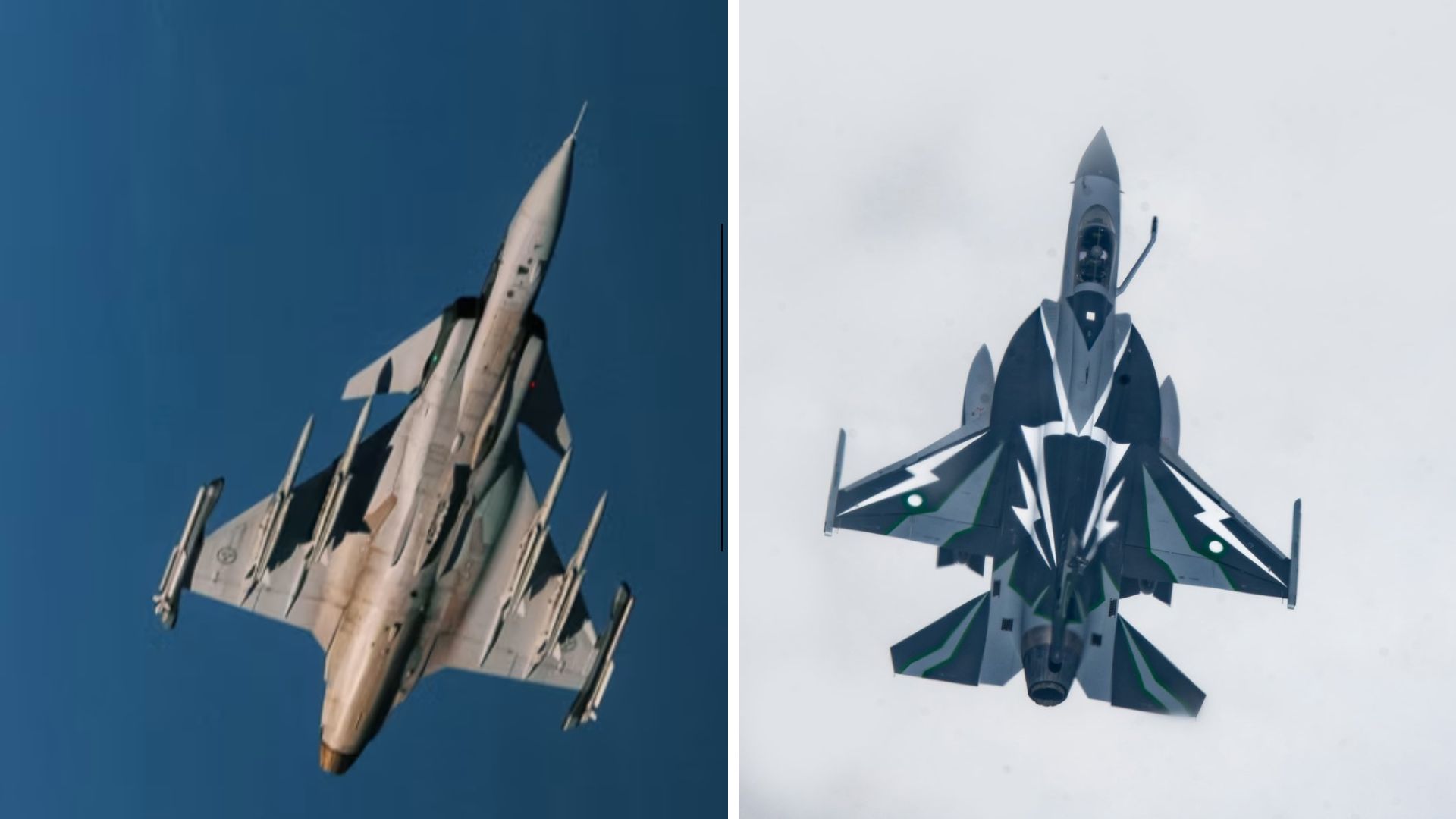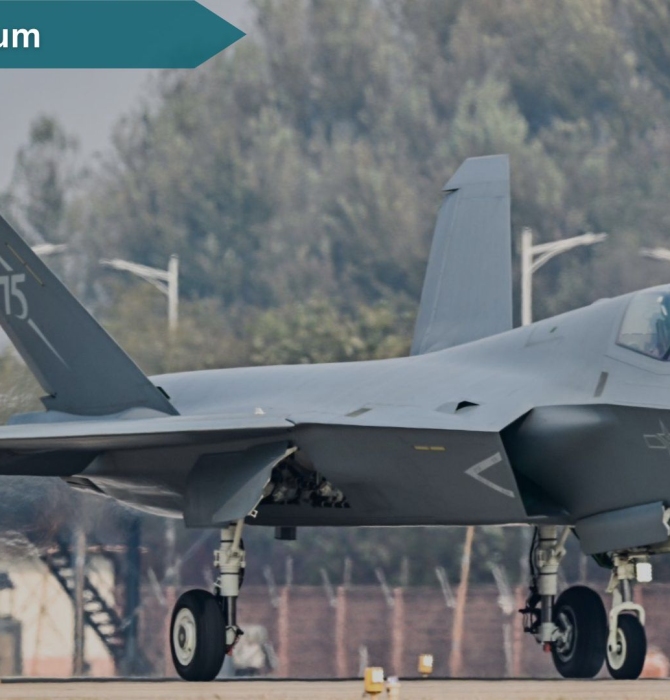18332Views

Sovereignty Without Strings, Why Lightweight Tactical Fighters Are Back Quwa Premium
Ukraine signed a Letter of Intent (LoI) to potentially procure 100-150 Saab JAS-39E/F Gripen fighter aircraft. While not a binding sale, the LoI signals the direction of the Ukrainian Air Force’s future air warfare plans, one that envisions building a hi-and-lo combination comprising a lightweight tactical fighter as the primary workhorse, spearheaded by a twin-engine, medium-weight asset in the Dassault Rafale.
What makes this important — and what ties directly back to Pakistan — is why this category is resurging. Lightweight fighters were originally meant for air arms that assumed they would fight alone, sustain their own fleets, and generate sortie volume without external guarantees. That doctrinal logic has always underpinned Pakistan’s airpower model.
The shock is that Ukraine and others are now converging on this same idea: alliances may help, but they cannot be relied upon for real-time warfighting. In a strategic sense, much of the world is drifting toward the requirements that Pakistan adopted, even if unintentionally.
The Russia-Ukraine War has been a wellspring of lessons about the evolving nature of modern warfare, especially with the rise of drones, loitering munitions, guided rockets, and cruise missiles, among many ‘connective’ elements binding these systems together (e.g., satellite imagery, multi-modal intelligence systems, and combined arms). But despite these shifts, some fundamentals remain entrenched, and the Ukrainians – having experienced these changes first-hand – see that modern crewed fighter aircraft will be critical to both their current and future needs.
However, the story for this analysis is the renewed and growing adoption of lightweight multirole fighters such as the Gripen, among many others. Be it Ukraine committing to a large-scale Gripen order, Canada seemingly showing interest in the same platform, and yet another country signing onto the JF-17 Thunder from Pakistan Aeronautical Complex (PAC), the interest in tactical fighters, which an earlier article of ours framed as perfect solutions for (at the time) a niche problem, is surging.
Interestingly, nothing about these lightweight multirole fighters changed in their inherent technical merits or limitations. Instead, the problems they were meant to solve have suddenly become more prevalent.
A Niche Requirement Becoming More Common?
To be clear, defining this category can seem arbitrary. Indeed, some major air forces lean on medium-weight fighters like the F-16, Mirage 2000, and J-10 to drive their tactical airpower requirements. However, while having access to fighters like the F-16, some countries (e.g., Pakistan) could not afford to buy as many to replace their large number of previous-generation aircraft, such as the MiG-19-derived F-6.
Here, it is worth noting — especially for Pakistan — that this economic and doctrinal constraint ultimately created an internal requirement that resembles Ukraine’s wartime lessons today: fighters that are good enough, available in sufficient numbers, and maintainable in-house.
Likewise, Northrop was working on a solution (F-20 Tigershark) aimed at such countries, i.e., those operating the previous generation of low-cost workhorse fighters, like the Northrop F-5 or Dassault Mirage III/5, with an affordable, lightweight multirole platform. However, not a single one of these new lightweight fighter platforms caught on to the same degree as their older-generation predecessors. Indeed, the Northrop F-20 was shelved entirely.
In 2023, we posited that the reason why lightweight multirole fighters (which we also termed as “tactical fighters” for brevity) did not see as much adoption past their originating markets because most states had no longer viewed airpower as both a strategic enabler and key tactical combat tool.
Instead, most markets had solely viewed their airpower as a strategic enabler. So, for example, Romania opted for the F-35 Lightning II. This selection arguably plays two roles: first, it delivers an element of deterrence through a capable stealth fighter and, second, it also equips Romania to interoperate with NATO (and pool its fleet with other F-35s). In effect, the F-35 plays a strategic role across several fronts.
In contrast, the Gripen was designed as a cost-controlled, high-availability fighter for driving sortie volume. It does so through simpler maintenance processes, a lighter logistics footprint, and greater versatility via motorway operations. In effect, the Gripen is meant to operate in a hot-war scenario (analogous to Ukraine) where, basically, direct military participation from allies cannot be taken for granted.
Thus, a Gripen operator assumes that they will be on the frontlines on their own – i.e., a reality that Ukraine, Pakistan, India, and, for a time, Sweden all had to integrate into their doctrines.
Hence, a potential F-35 operator assumes that they will work within a wider, multi-national framework that stresses a deep level of interoperability with allies, while a tactical fighter user functionally plans on fighting their own wars. The latter need numbers, high availability rates, and support capacity linked to one’s indigenous industry.
It was on this basis that this author – as early as 2023 – had projected that Ukraine would, eventually, seek the Gripen (or analogous fighter platform), as stated here:
That said, it is possible that certain ongoing events may push more countries to consider tactical fighters. For example, the Russia-Ukraine War is showing that a low-cost, scalable, and high-technology asset like the JF-17, Tejas, or FA-50 could have helped Kyiv in its area-denial efforts. Deploying a fighter with an AESA radar, BVRAAMs, and integrated electronic countermeasures (ECM) could have paired well with its ground-based air defence system (GBADS). Likewise, it could have benefitted from such a fighter during its blunted counteroffensive, which it blames in part to a lack of airpower. A low-cost tactical fighter could have been deployed in large quantities to cover each operational theatre, drive high numbers of sorties, and sustain losses. Following this war, one can expect Ukraine to invest in acquiring – if not locally producing – such a fighter. However, with aspirations to join NATO, Kyiv will likely opt for a solution that can its partners would accept, such as the FA-50 from South Korea or the Saab Gripen.
Thus, Ukraine evolved into a market for tactical fighters due to its harsh experiences in fighting Russia. Moreover, seeing Kyiv opt for the Gripen is not surprising as, generally speaking, the bulk of any growth in this market will be captured by a Western-leaning option, namely the Gripen or the South Korean FA-50. The latter has seen adoption in Southeast Asia and Central Europe via Poland.
End of excerpt. You’ll need to login or subscribe to Quwa Premium to access the full article.
Existing Quwa Plus/Pro members can log in below
Note: Logged in members may need to refresh the article page to see the article.


